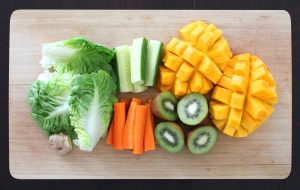 People in Irvine, CA, who are the most successful at weight loss choose veggies to dominate their menu. One reason for that is their fiber to calorie ratio. They’re high in filling fiber compared to their relatively low calorie count. They also have more water compared to lower sugar. That means they fill you up before you’ve consumed enough calories to gain weight.
People in Irvine, CA, who are the most successful at weight loss choose veggies to dominate their menu. One reason for that is their fiber to calorie ratio. They’re high in filling fiber compared to their relatively low calorie count. They also have more water compared to lower sugar. That means they fill you up before you’ve consumed enough calories to gain weight.
Some vegetables qualify more as a starch than a vegetable.
There are also some vegetables that are better for weight loss. Vegetables like legumes—chickpeas, lentils, peas, kidney, pinto, navy and black beans—potatoes and corn should be considered starchy food, rather than vegetables. Unlike foods considered vegetables, you can’t consume them as freely as you can the rest of the vegetable family. While all vegetables contain fiber, including starchy vegetables, and all vegetables contain nutrients, starchy vegetables are higher in calories, so you may limit the amount you eat if you want to lose weight.
Both fruit and vegetables should be part of your diet.
Vegetables and fruits should play a prominent role in your diet. Because of the higher sugar content in fruit, rather than eating 2 to 2 ½ cups as you would vegetables, you should limit your fruit intake to 1 ½ to 2 cups a day. Both fruits and vegetables are high in fiber, which can lower blood cholesterol. Consuming fruits and vegetables can lower your risk of some types of cancer and heart disease, reduce the potential for type 2 diabetes and both fruits and vegetables provide phytonutrients and chemicals that help keep you younger and delay illness.
Fill up on veggies, but don’t forget fats and protein foods.
Choosing to put more veggies on your plate and eating those first will certainly help you live healthier and be healthier, but you also need protein and fat. Whether you’re a vegetarian or an omni Varian, you still need the building blocks to create a healthy body. Lean chicken, beans, eggs, cottage cheese and seafood are a few sources of protein. Healthy fat comes from avocados, cheese, fatty fish and nuts, just to name a few sources. Some of the protein sources and fat sources overlap other categories, including vegetables.
- Eating more vegetables means getting more fiber. Fiber not only helps keep you regular, it also helps you eat less, live longer, keep blood sugar regulated and lower cholesterol.
- Women of childbearing ages should definitely eat more fruits and vegetables to benefit from the folic acid they contain. Folate helps prevent birth defects.
- Eating whole veggies and fruit, as opposed to taking a pill or consuming processed foods, provide a spectrum of nutrients that act in synergy to boost good health at the cellular level.
- Creating a colorful plate of fruits and vegetables can provide most of the nutrients the body needs, since each color represents different vitamins, minerals and phytonutrients.
